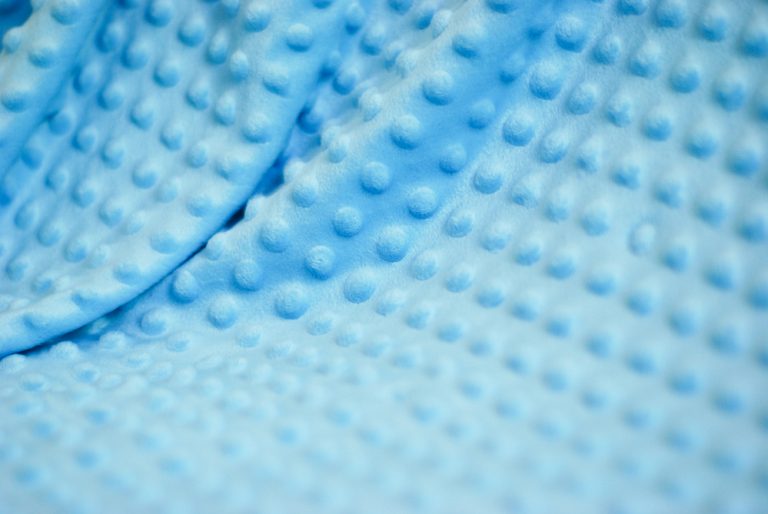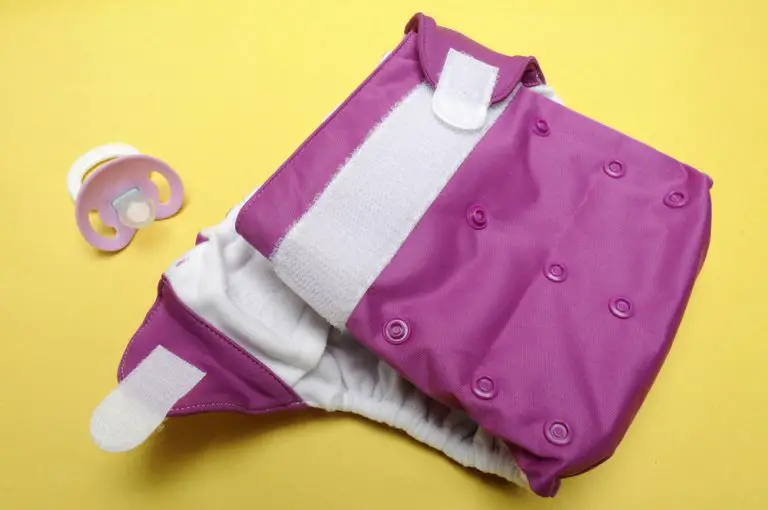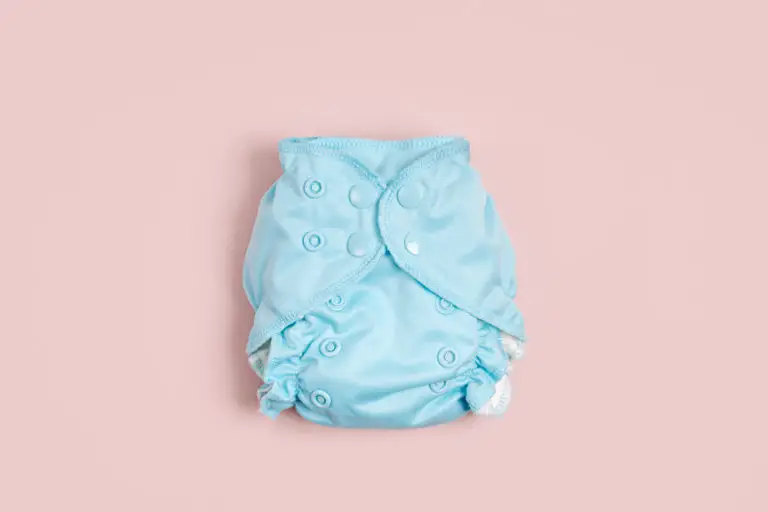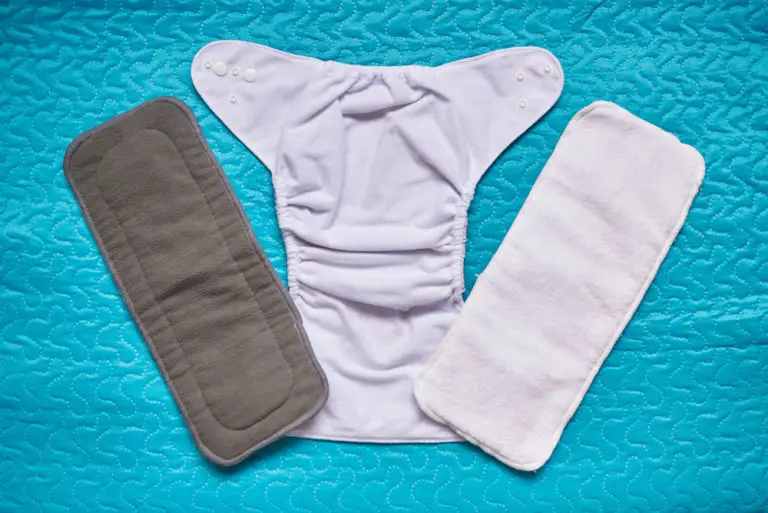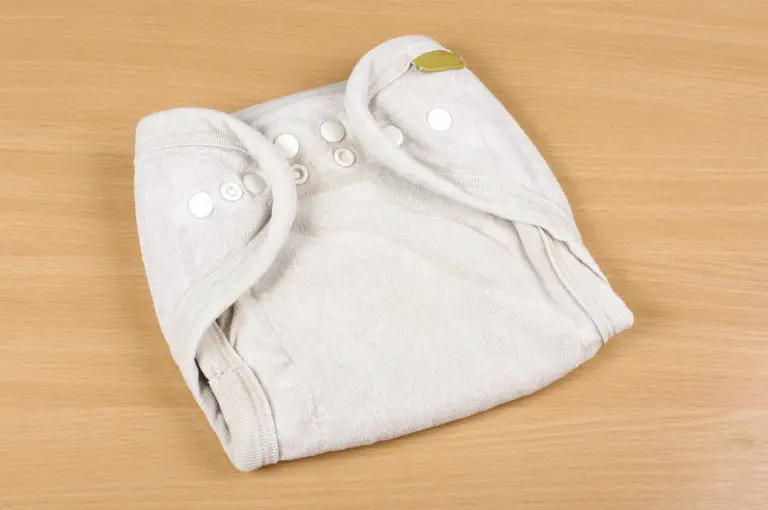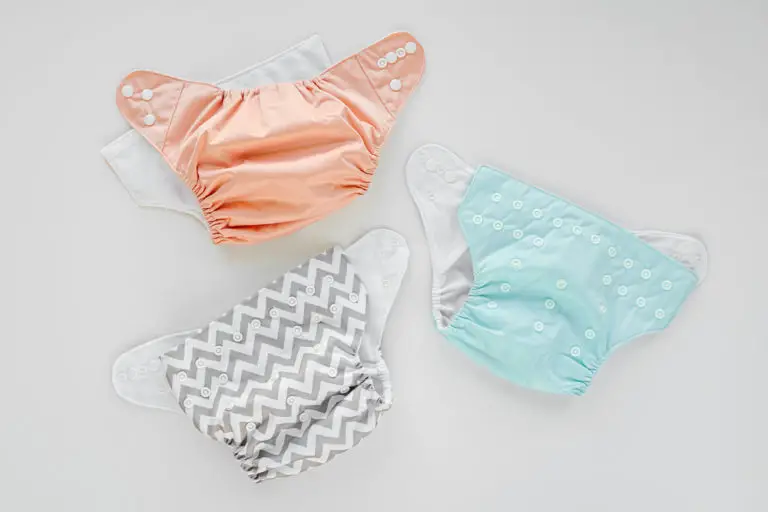All-In-One Cloth Diapers: The Beginner’s Guide (2024)
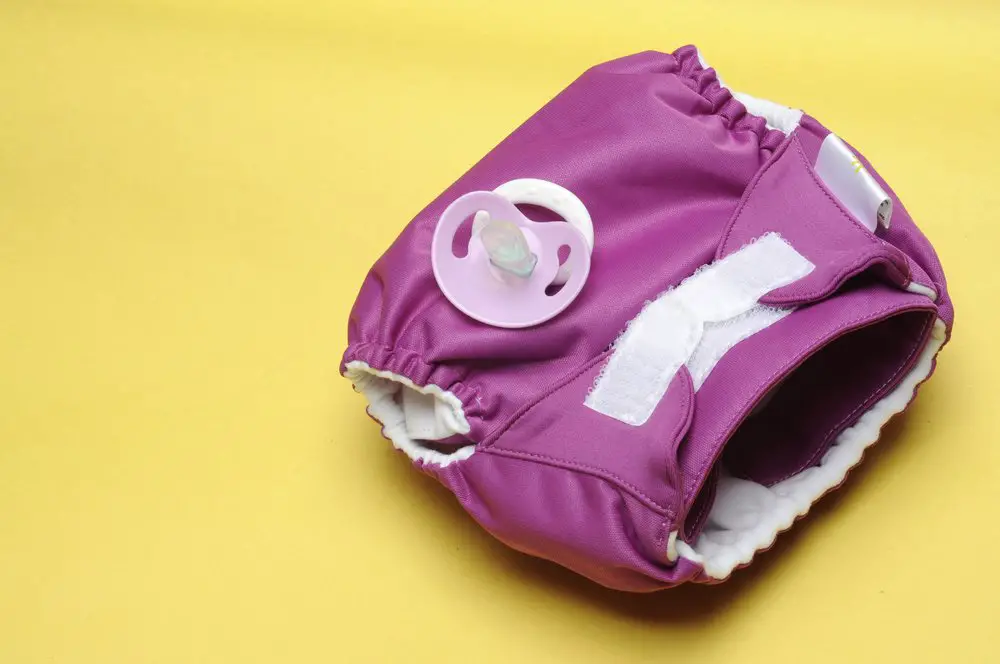
All-in-one cloth diapers are perhaps the most popular style of cloth diapers. This is because they are easy to use and beginner-friendly. All-in-one cloth diapers come in a variety of styles and fabrics.
As their name states, all-in-one diapers are a cloth diapering system that consists of one piece. Because of their design, they tend to be the most costly cloth diaper, but there are fewer additional pieces you need to purchase.
Overall, when it comes to cloth diapering, all-in-ones are as easy as it gets.
- What Are All-In-One Cloth Diapers?
- All-In-One Vs. All-In-Two Diapers
- For Whom are AIO Diapers Best For?
- What Materials Are Used in AIOs?
- How Much Do AIO Cloth Diapers Cost?
- Benefits of AIO Cloth Diapers
- Downsides of AIO Cloth Diapers
- How to Use AIO Cloth Diapers?
What Are All-In-One Cloth Diapers?
All-in-one diapers or AIO are a style of cloth diapers pre-formed to fit a baby’s bottom. An all-in-one diaper has an hourglass shape and elastic bands at the legs and snaps or Velcro at the waist to secure it.
AIO diapers are simple to use because they go on and off like disposable diapers. AIO cloth diapers have a soft, absorbent inner layer and a waterproof PUL outer layer.
Most all-in-1 cloth diapers are one-size, meaning they will fit babies from about 8lbs to 40lbs. This makes them extremely convenient since you only need to purchase one set of diapers.
There are newborn AIO cloth diapers for babies roughly 6-9lbs, but since most babies outgrow them in a matter of weeks, many people decide they are not worth the extra cost.
All-In-One vs. All-In-Two Diapers
If you are new to the cloth diapering world, you may have heard the term all-in-two and wonder what the difference is between all-in-one and all-in-twos (AIO vs. AI2).
An all-in-two diaper has two separate pieces that you take apart. The outer waterproof shell and the absorbent lining are detachable. The benefit of this is that you can typically reuse the outer layer two or three times before washing it with all-in-twos.
All-in-twos have a quicker drying time than all-in-ones because separating makes them less thick.
However, you will have to assemble your all-in-twos before your baby can wear them, which means either having several preassembled or assembling them while your baby is on the changing table if you are reusing the cover.
Since an all-in-one diaper is one piece, you will need to change the entire diaper with each change. Also, because they are one-piece, they are bulkier to store and pack than AI2s.
For Whom are All-In-One Diapers Best for?
The all-in-one cloth diaper system is best for those new to cloth diapering or who may have a nanny or family member looking after their baby regularly.
All-in-one reusable diapers are the height of cloth diapering convenience, making them easy for anyone to use.
- These diapers are great for people on the go because they do not require extra pieces or pins. However, they are bulky, so the downside is you might need a larger diaper bag.
- AIOs also make the perfect overnight diaper because they are ultra-absorbent. You can easily add a diaper insert to up absorbency if needed.
- If you have a newborn, all-in-one cloth diapers will make diaper changes simpler and quicker as you adjust to life as a parent.
All-in-ones should air dry, ideally outside in the sun, so if you have the time and space to allow for this, even better. Most diaper manufacturers recommend not putting them in the dryer because it can wear down the snaps and elastic.
Also read: Hospital Bag Checklist: Everything for Mom, Baby & Partner
What Materials Are Used in All-In-Ones?
All in one diaper have an outer PUL layer that makes them waterproof. The PUL layer is typically made of polyester coated in TPU (a thin laminate plastic).
The inner layers of all-in-one diapers vary by brand, but most are made from microfiber, microfleece, or polyester blends.
Polyester is an artificial material that is highly absorbent and can be washed several times a week without losing its strength and durability.
However, polyester by itself cannot typically go directly against your baby’s skin, so there will be another absorbent fabric layer over the top, such as microfleece, cotton, or bamboo.
Microfleece is sometimes used as the absorbent stay-dry fabric in an AOI cloth diaper. Unlike polyester, microfleece can touch your baby’s skin, and it is a standard fabric used as booster pads in cloth diapers.
Microfleece is also used to make diaper covers as well as it has strong wicking properties.
How Much Do All-In-One Cloth Diapers Cost?
Because the style of the easy-to-use AIO cloth diaper is so popular, there is high demand for the product; thus a slightly higher cost. However, keep in mind that it is indeed a one-piece diaper limiting the extra pieces required.
As with most things, the price range varies, but you can expect to pay on average $15-$20 per diaper. For example, the GroVia newborn all-in-one cloth diaper is $16.95, while with bundles you can get bulk savings up to 10%.
Before deciding which cloth diapers will work best for you, you will want to read reviews about durability, sizing, washing and drying requirements, softness, etc. In some cases, the pattern or fabric design will affect the price.
When cloth diapering a newborn, you will need approximately 15-20 newborn AIO cloth diapers; this is if you do laundry every day or every other day maximum. Ideally, you should have enough diapers for 2-3 days, which means roughly 36 diapers.
As your child reaches toddlerhood, you will probably only need about twenty diapers, so some choose to use disposables or purchase their newborn diapers secondhand.
Benefits of All-In-One Cloth Diapers
A cloth diaper, all-in-one, is no doubt the most straightforward style of cloth diaper to use.
There are very few additional pieces required, although some people use inserts for added absorbency. All-in-ones are simple to teach family and caregivers how to use.
All-in-one cloth diapers, AIOs, are adjustable so they can grow with your baby, and when appropriately laundered, should have an extensive lifespan.
Many couples use their cloth diapers for two or even three children or pass them on to a family member or friend.
If you prefer to use more natural materials, there are organic all-in-one cloth diapers. For example, Grovia sells one-size all-in-ones with 100% Organic Cotton on both sewn-in insert and snap-in booster for $25.95 a piece.
All-in-ones are absorbent, waterproof, great for overnight use, and simple to use.
Downsides of All-In-One Cloth Diapers
Despite their overall simplicity and convenience, all-in-one diapers do have some downsides; chief among them is their cost and drying time.
While the price of all-in-one cloth diapers varies from brand to brand and fabric to fabric, they are generally the most costly style of cloth diapers.
Typically ranging anywhere from $15 to $30 each, all-in-ones can have a hefty start-up price. Of course, over time, they will pay for themselves and then some, but it can be daunting to shell out $500 upfront for diapers.
The second downside is that they take the longest to dry. It is not recommended to put all-in-ones in the dryer, so line drying is best. If you cannot line dry outside, it will take even longer, which may mean you need extra diapers to fill the gap between washing and dry time.
Finally, all-in-ones, even those that use organic materials, have some manufactured material to make them waterproof and absorbent. If you are against using artificial fabrics, then all-in-ones are probably not the best choice for you.
How to Use All-In-One Cloth Diapers?
All-in-one cloth diapers are used just as you would a disposable diaper. Once you have removed the soiled diaper and placed it in the laundry bin, place a clean diaper under your baby’s bottom and fasten it on!
If there is poop in the soiled diaper, you will need to remove it with a diaper sprayer or scraper before placing it in the bin.
Some parents use biodegradable, despicable liners in their cloth diapers to make poop clean-up easier. These liners can be tossed or flushed.
All-in-one diapers typically have snaps or velcro to fasten the diaper around the baby’s mid-section. There are also elastic bands around the legs that parents must adjust according to their baby’s weight and size.
If you notice red lines or marks when you remove the diaper, it was too tight. Avoid using diaper creams or baby powder (unless specifically stated as cloth diaper safe) when using cloth diapers, as it can decrease their absorbency.

Laurel Davidson
Laurel brings her passion for parenting and years of problem-solving experiences to ParentingMode. She is the editor of ParentingMode, ensuring that the content is relevant and valuable to the readers. Laurel received her master’s degree in public administration with a certificate in economic development. She is a stay-at-home mom, raising two adorable kiddos, Aurora and Thomas. Laurel enjoys sharing her experience as a parent, traveling, and good food.

